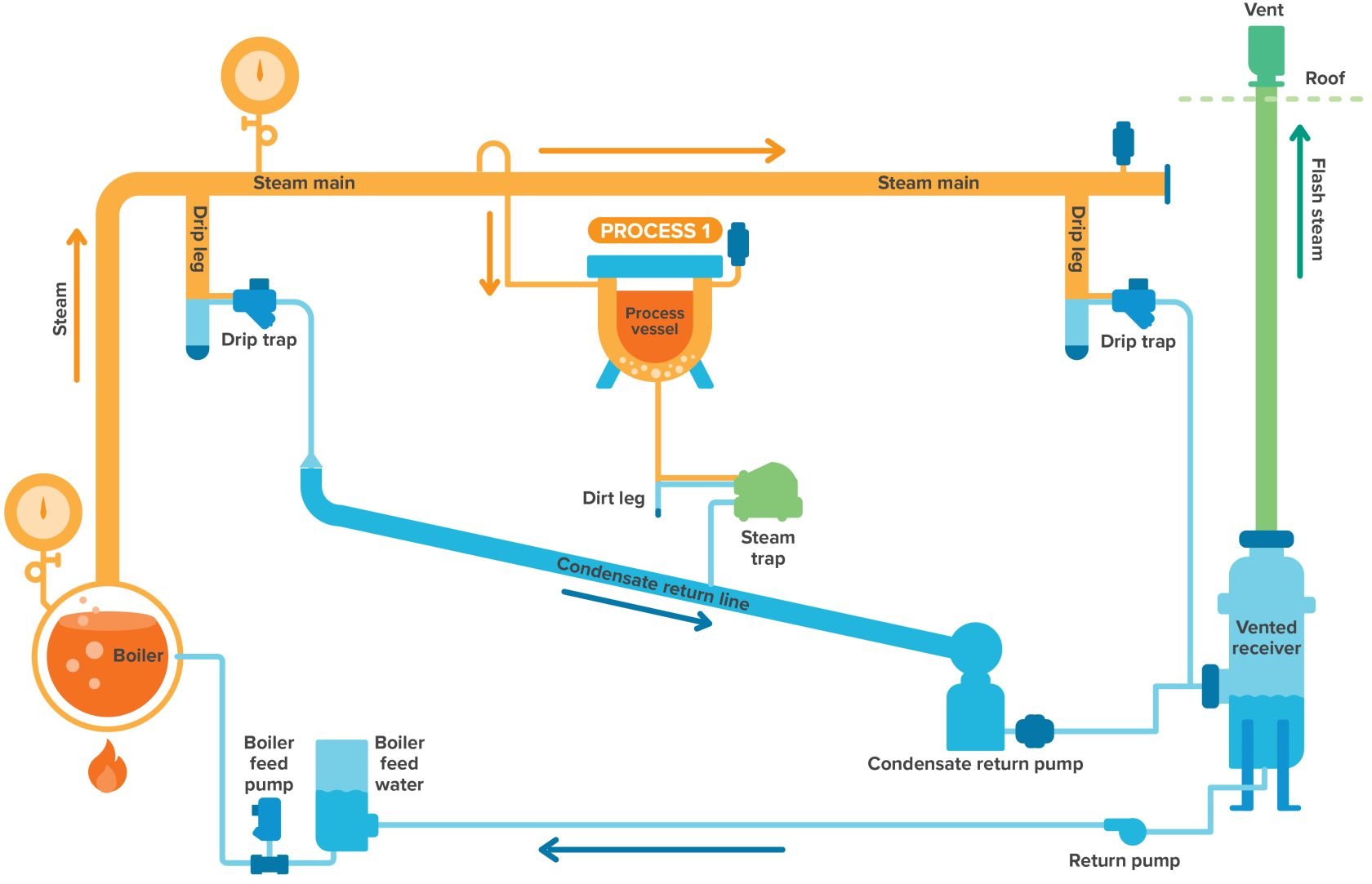Operations staff
Safety is the top priority for boiler operators’ training, but you should also brief them on efficiency measures. Ensuring that operators have on-site training to maintain and optimize equipment functionality will pay off in the long run. Similarly, maintenance staff know how to keep equipment operational but that doesn’t always result in efficient operation. Ensure training includes staff who repair and operate steam users.
Also, note if your jurisdiction requires that certain equipment such as steam turbines should be operated under a different license than the boilers and make sure those operators are also trained in the basics of the rest of the boiler system.
Operations in action
When process staff is tasked with operating steam users, their primary focus can be to keep the process functional, using supporting utilities to make their equipment function. If they aren’t given an understanding of the functionality of the utility systems, it can create inefficiencies, as our team discovered recently:
During an equipment startup visit at a large food production facility, we noticed that condensate return line from a thermal processor was incorrectly installed. During the inspection, the team added the corrective action to the log but the process operator needed an immediate solution to keep the production line and filler operational. The client planned to implement the fix as soon as production was down for the day, so we added a temporary drain line to allow the condensate to drain from the system.
When we returned two weeks later, the valve was still open, and nothing was fixed. In the operator’s view, the problem was solved; however, the system was draining significant amounts of condensate. That should never be considered a normal practice.
Process staff needs training on how to best operate utilities, which includes an understanding of the impact they have on a plant’s efficiency and sustainability.




